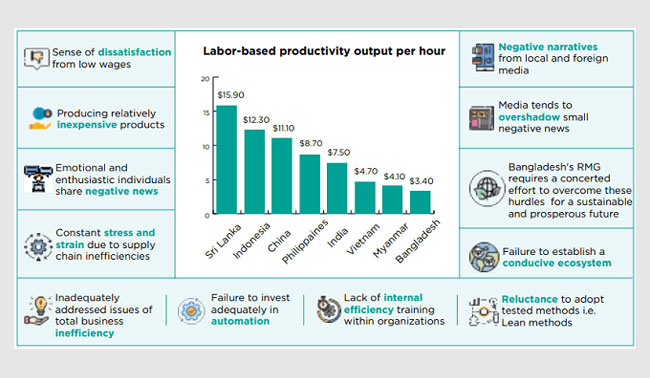Enhancing Labor-Based Productivity in Bangladesh’s Apparel Industry
Boosting Efficiency in the Heart of Global Apparel Manufacturing
Bangladesh is a global leader in the apparel industry, driven by a skilled and dedicated labor force. However, enhancing labor-based productivity is critical for sustaining competitiveness in an ever-evolving market. At Trade Wise Sourcing, we recognize the importance of adopting innovative practices to empower the workforce and boost operational efficiency.
Key Ways to Enhance Labor-Based Productivity
- Investing in Worker Training and Skill Development
- Regular training programs can upskill workers, improving efficiency and reducing errors.
- Emphasizing soft skills like teamwork and communication boosts overall productivity.
- Implementing Modern Technologies
- Introducing automation in repetitive tasks streamlines workflows.
- Advanced tools like real-time monitoring systems ensure better tracking and management.
- Improving Workplace Conditions
- Providing ergonomic workstations and adequate lighting reduces worker fatigue.
- Ensuring clean and safe environments motivates employees and increases output.
- Offering Incentives and Motivation
- Performance-based incentives encourage workers to meet and exceed targets.
- Recognition programs enhance morale and foster a culture of excellence.
- Enhancing Communication Channels
- Transparent communication between management and workers ensures clarity in tasks.
- Collaborative approaches empower employees to contribute innovative ideas.
- Sustainable Practices for Long-Term Growth
- Adopting eco-friendly production methods not only benefits the environment but also streamlines resource usage.
- Engaging workers in sustainability initiatives creates a sense of purpose.
The Role of Trade Wise Sourcing
At Trade Wise Sourcing, we are committed to promoting productivity and growth within Bangladesh’s apparel industry. By fostering partnerships between buyers and manufacturers, we help create an environment where productivity and quality go hand-in-hand. Our approach includes:
- Facilitating Training Programs: Supporting factories in worker skill enhancement initiatives.
- Encouraging Technological Upgrades: Advising manufacturers on adopting cutting-edge tools.
- Promoting Ethical Practices: Ensuring compliance with international labor standards.
Why Enhancing Productivity Matters
- Improved Competitiveness: Higher productivity enables manufacturers to compete effectively in the global market.
- Increased Profitability: Efficient processes reduce costs and improve profit margins.
- Sustainable Growth: Empowering workers ensures long-term stability and industry expansion.
Partner with Trade Wise Sourcing for Sustainable Growth
As a leading buying house, Trade Wise Sourcing is dedicated to driving innovation and productivity in Bangladesh’s apparel industry. By connecting global buyers with ethical and efficient manufacturers, we pave the way for a brighter, more sustainable future.
Contact Us Today
Interested in learning more about enhancing productivity in the apparel industry? Partner with Trade Wise Sourcing and join the movement toward sustainable and efficient garment manufacturing.










Leave a comment